Security Inks and Fluorescent Nanomaterials for Cultural Heritage
Abstract: As crimes involving cultural heritage objects continue to escalate globally, there is a growing demand for new technology-aided interventions. Tagging the objects with security inks can be crucial in crime deterrence and evidence-based validation. In this work, different security inks were specifically formulated by using zinc oxide quantum dots, carbon quantum-dots, and lanthanide-doped phosphors as the fluorescent agent for application on artwork surfaces. The more promising ink formulations in water, obtained by combining proper binders, demonstrated compatibility across several substrates (papers, stone, metal, and ceramic), workability with various application techniques (pen-writing, brushing, stamping), and strong resistance to degradation over different weathering tests.
Rodorico Giorgi: Associate Professor at the University of Florence (dept. of Chemistry), he is associated to the national consortium CSGI – Center for colloid and surface science. Msc in Chemistry and PhD in Science for Cultural Heritage, Giorgi’s research activity is focused on the application of nanotechnology to the conservation of artworks. Giorgi is author of 6 patents and more than 160 publications in such field.
Daniela Iacopino: Dr Daniela Iacopino is a senior researcher at the Tyndall National Institute. Daniela has expertise on fabrication of functional nanoscale materials and their application health, agri-food and cultural heritage. Within these research themes, special focus is devoted to the development of green materials and fabrication techniques for sustainable electronics. Daniela has participated to 10 EU projects several national projects. Daniela has published over 100 scientific manuscripts, graduated seven PhDs and supervised/mentored over 20 master students and staff researchers. She is the chair of Empowering Women@Tyndall (EW@T), supporting female staff to build their confidence and increase their visibility.
Interdisciplinary by Nature: Conservators in Cultural Heritage Science
Abstract: Conservators of cultural heritage are increasingly seen as vital contributors to scientific research, bridging materials science, art history, and cultural understanding. This presentation explores their evolving role through the EU-funded AURORA project (Artwork Unique Recognition and tRacking through chemicAl encoded data). Within AURORA, conservators bring expertise in materials, artistic techniques, and degradation, helping to develop tools for authentication and preservation. Emphasizing ethics, minimal intervention, reversibility, documentation, they guide responsible innovation. Case studies from AURORA show how conservators align science with sustainability and cultural values. The talk positions them as core partners shaping heritage science and its impact on society.
Antonio Mirabile: is a Paris-based paper conservator and preventive conservation consultant. Active since 1988 and accredited by the French Ministry of Culture, he works with museums and private collections worldwide. As UNESCO expert and EU project partner, he contributes through research, education, and the conservation of art and archives on paper.
Creation of a Digital Identity through XRF Mapping
Abstract: In the field of Cultural Heritage there is a strong need to create a digital identity linked to a cultural good that simplifies and makes transparent a series of operations related to the management of cultural good, from museum cataloguing, to transport logistics, to contractual matters, to name but a few. The lecture illustrates how its non-invasiveness, the ability to obtain fast, sensitive and in-depth analyses, and the possibility of representing through images the chemical distribution of the constituent elements of a cultural good are the main features that make XRF mapping the ideal technique for obtaining a stable and durable Digital Identity.
Lorenzo Bellucci: is a scientist in the field of diagnostics applied to the study of cultural heritage. He gained experience in some leading private companies and has been scientific director of DRIART AG since 2010. He collaborates with the University of Florence and contributed to founding OTID srl, a start-up created for the technological development of Digital Identity applied to Cultural Heritage.
The Future of Heritage Management: How AI and Blockchain Transform the Art World
Abstract: This lecture explores the integration of blockchain and AI technologies for enhancing cultural heritage management systems. Art counterfeiting and inefficiencies in traditional provenance methods highlight the need for robust solutions to ensure artifacts’ security, authenticity, and traceability. Blockchain’s immutability, transparency, and decentralized structure provide an innovative foundation for addressing these challenges. This framework enables efficient management of artifact records and ownership by incorporating tools such as invisible marking technologies, AI-driven authentication, and user-friendly decentralized applications.
Taras Maksymyuk: Department of Information and Communication Technologies, Lviv Polytechnic National University, Lviv, Ukraine. Taras Maksymyuk earned his Ph.D. in telecommunication systems and networks in 2015. He is currently a professor at the Department of Information and Communication Technologies at Lviv Polytechnic National University. His primary research interest lies in integrating advanced technologies, such as AI and blockchain, to address engineering and social challenges.
Blockchain and UWB-based Indoor Localization
Abstract: This presentation will offer a dual focus. Firstly, it delves into blockchain technology, covering core definitions, historical context, operational mechanics including block structure and various consensus algorithms, alongside an AURORA overview. A practical segment will guide attendees through Solidity smart contract development, from Remix IDE to deploying contracts and interacting via Etherscan. Secondly, the presentation explores UWB-based indoor localization, detailing its underlying technology, system architecture, specific Aurora hardware components, and methods for online data sharing using The Things Network, culminating in a live demonstration of a real-world indoor localization system in action.
Matias Torres Diaz: is a blockchain consultant at Avvale with a background in programming and distributed systems. He focuses on developing practical blockchain solutions for real-world business challenges. Technology enthusiast with experience in implementing innovative applications in the emerging digital ledger space.
Building a Network to Fight Illicit Trafficking of Cultural Artefacts in Hungary
Abstract: As heritage crime and disasters caused by natural hazards are complex threats involving multiple factors and actors, cultural institutions cannot address them alone. To strengthen its resilience, the Hungarian National Museum (HNM) has, in recent years, pursued several interconnected strategies. It redefined its approach to emerging threats, launched a specialized project to enhance preparedness and response, prioritized capacity building, and engaged in national and international research and pilot initiatives. An interdisciplinary dialogue was also initiated to comprehensively redesign the museum’s disaster risk management (DRM) plans. Key first steps included studying best practices, advancing capacity building and awareness efforts, and remapping stakeholders — all in parallel and reinforcing one another. Additionally, an HNM colleague was invited to join the OSCE-led Heritage Crime Task Force, a multi-faceted initiative targeting the looting of archaeological and cultural sites, the illicit trafficking of cultural property, and its links to organized crime and terrorism financing. Through these efforts, HNM has promoted dialogue and fostered cross-sectoral cooperation to protect endangered cultural heritage. This pioneering initiative has created a new collaborative environment, linking diverse sectors and inspiring a broader network of actors committed to cultural heritage protection.
Lujza Varga: a museum professional with 13+ years of experience, leads project cooperation and cultural property protection at the Hungarian National Museum. A PhD in History, she is Hungary’s Blue Shield representative and a Heritage Crime Task Force member, specializing in crisis management and heritage protection.
Equipping Museums to Fight Illicit Trafficking
Abstract: The presentation explores how museums can be equipped to combat illicit trafficking, highlighting the role of the Balkan Museum Network (BMN) as a capacity-building and exchange platform. It introduces BMN’s involvement in the AURORA project, emphasizing guidance from a museum perspective with input from two member institutions. Key barriers to adopting new technologies, including weak ICT infrastructure and inadequate legal frameworks, are discussed. A conservator’s perspective from the National Museum of Bosnia and Herzegovina illustrates early testing of AURORA’s invisible marking technology in a challenging environment.
Aida Vežić: Aida Vežić is Secretary General of the Balkan Museum Network, and Director of BMN Association based in Sarajevo, Bosnia and Herzegovina. She completed the Faculty of Economics at the University of Sarajevo and Master Program “Cultural Projects for Development“. Aida has been developing civil society organisations in the last 25 years and working as consultant, facilitator, researcher, evaluator and trainer. Her work has mostly been cross-border focusing on culture, heritage, peace building and philanthropy.
Jove Pargovski: MSc works at the National Institution Institute and Museum Bitola in North Macedonia, where he leads initiatives in the digitization and documentation of cultural heritage. His projects emphasize digitization and inclusivity, aiming to broaden public access to museum collections. He is a published author and an active member of regional heritage networks, advancing cultural preservation across the Balkans.
Azra Bečević Šarenkapa: Museum adviser, has worked at the National Museum of BH as conservator since 1997. Her expertise spans a wide selection of areas, from preserving objects made of textiles, wood, and metal to conducting environmental monitoring, pest control, reorganization and organization of storages. She earned an engineering degree in textile technology, at Textile Technology Faculty, University of Zagreb, Croatia and M.A. in Conservation of Historic Objects, Department of Archaeology, University of Durham, UK.

Rodorico Giorgi
Security Inks and Fluorescent Nanomaterials for Cultural Heritage
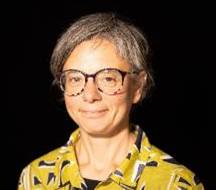
Daniela Iacopino
Security Inks and Fluorescent Nanomaterials for Cultural Heritage
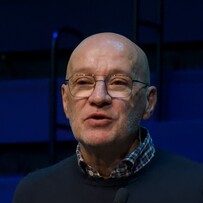
Antonio Mirabile
Interdisciplinary by Nature: Conservators in Cultural Heritage Science

Lorenzo Bellucci
Creation of a Digital Identity through XRF Mapping

Taras Maksymyuk
The Future of Heritage Management: How AI and Blockchain Transform the Art World

Matias Torres Diaz
Blockchain and UWB-based Indoor Localization
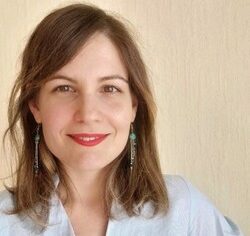
Lujza Varga
Building a Network to Fight Illicit Trafficking of Cultural Artefacts in Hungary
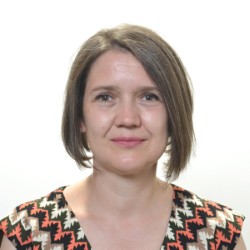
Aida Vežić
Equipping Museums to Fight Illicit Trafficking
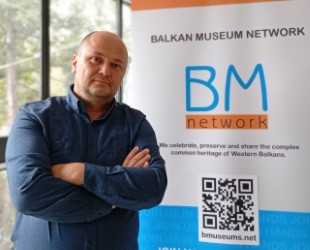
Jove Pargovski
Equipping Museums to Fight Illicit Trafficking
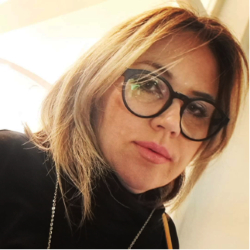
Azra Bečević Šarenkapa
Equipping Museums to Fight Illicit Trafficking


